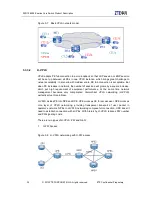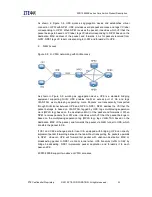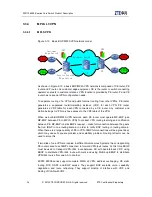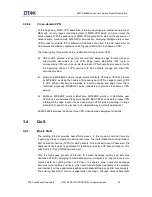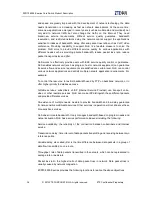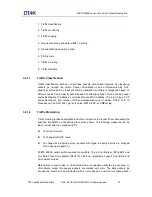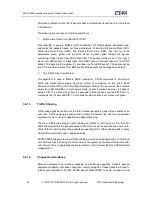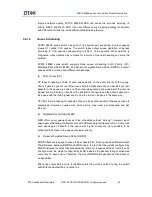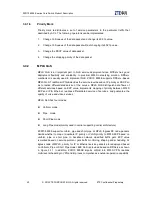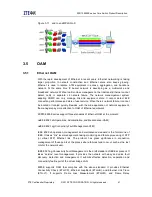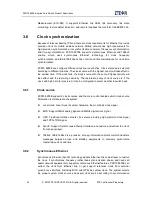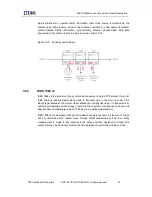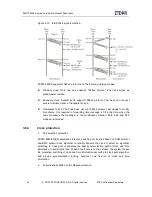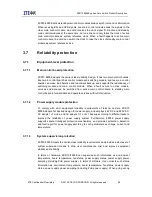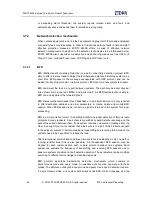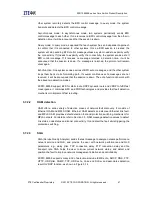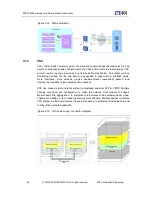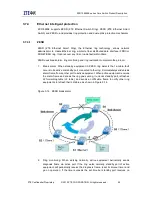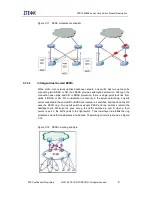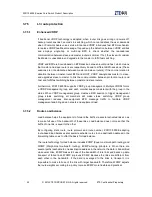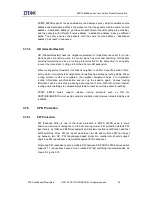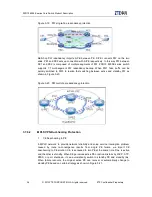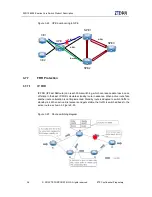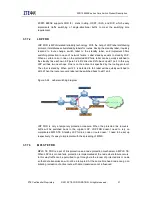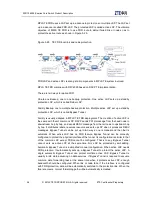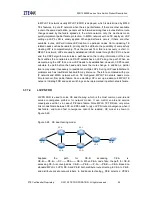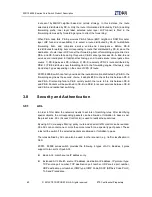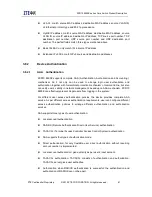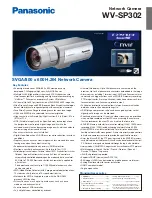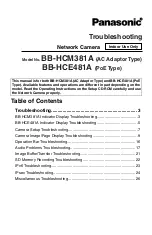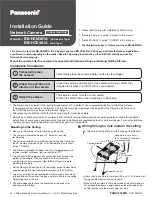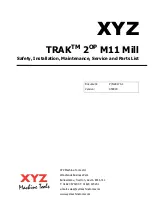
ZXR10 8900E series Core Switch Product Description
46
© 2013ZTE CORPORATION. All rights reserved.
ZTE Confidential Proprietary
or exceeding alarm threshold, the system reports relative alarm and fault, and
automatically saves and sends them to related server regularly.
3.7.2
Network detection mechanism
When network equipment runs, link fault, equipment single point of failure and equipment
connectivity fault may take place. In order to find various network faults in time and start
effective protection measures, ZXR10 8900E offers a series of effective network
detection mechanisms. In addition to the detection technologies to be introduced below,
ZXR10 8900E also supports some detection and positioning means such as UDLD, IP
Ping, IP Trace, multicast Trace route, LSP Ping and LSP Trace route.
3.7.2.1
BFD
BFD (Bidirectional Forwarding Detection) is a path connectivity detection protocol. BFD
aims to offer a low overhead to detect the fault between adjacent forwarding systems in a
short time. BFD packet is the message encapsulated with UDP protocol, and can be
loaded into any proper media or network protocol. BFD can run at several system layers.
BFD can detect the fault in any path between systems. The path may be direct physical
link, virtual circuit, tunnel and MPLS, and indirect path. As BFD fault detection is simple,
BFD can quickly detect the forwarding fault.
BFD status mechanism needs three handshakes. It is a simple service. It is only required
to offer destination address and other parameters to create, delete and modify BFD
session. When BFD session is up or down, a signal is returned to the system for proper
processing.
BFD is a simple Hello protocol. It is partially similar to neighbor detection of famous route
protocols in many respects. A pair of system periodically send detection message on the
path of the session between them. If one system receives no detection message from the
other in enough time, it will consider that a fault occurs to a part of the bidirectional path
to the adjacent system. In certain conditions, transmitting and receiving rate between the
systems need to be negotiated to reduce the load.
After bidirectional communication between two systems is established, only one path is
running (unidirectional link is also possible). An independent BFD session may be
created for each communication path or data protocol between two systems. Each
system can evaluate the frequency of transmitting and receiving BFD packet so as to
keep two systems consistent in fault detection duration. The parameters can be modified
according to different surroundings to meet the demands.
BFD protocol describes bidirectional detection mechanism which consists of
asynchronous mode and query mode. An auxiliary echo function can work with these
modes. The difference of asynchronous mode and query mode lies in detection location.
In asynchronous mode, one system periodically sends BFD control message, and the
Содержание ZXR10 8900E series
Страница 1: ...Operator Logo ZXR10 8900E series Core Switch Product Description ...
Страница 2: ......
Страница 10: ......

